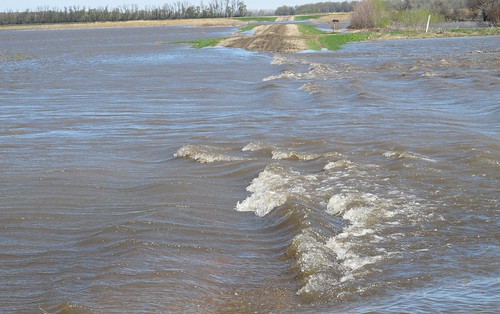
Weather dominates the conversation at local coffee shops and community gathering locations across the Northern Plains. Depending on the time of the year, I’ve heard things like this:
“We sure could use rain - really dry out there. Cattle are going to have to come off the pastures soon.”
Or…
“Hoping the rain will break here for a few days so I can get the hay cut without it getting rained on this time.”
Or maybe…
“Wow, that storm sure was a toad-drowner. It’s too bad it didn’t come slower so more of that rain could have soaked in instead of run off.”
The timing, resource use, and products of agricultural operations are all affected by weather. Blizzards, drought, and floods have been happening longer than there has been ranching and farming in the Northern Plains. Local ranchers and farmers, some of whom have experienced five generations in these rural communities, can put the current weather conditions into context, however. For example, the devastating losses of cattle in South Dakota and Nebraska to the early 2013 October snowstorm rekindled memories of prior memorable winter storms stretching all of the way back to the Schoolhouse Blizzard of 1888. The economic devastation of the 2012 drought in the Northern Plains evoked hardships of past droughts reaching back to the “Dust Bowl” years of 1934-1940. Lastly, recent floods in Colorado in September 2013 brought back memories of the 1997 and 2011 floods in the Missouri River Basin. All of these prior weather events have dramatically shaped rural communities through the decisions made by landowners on how to maximize productivity under difficult conditions.
Shifting climate is expected to bring about some changes to the weather that we can anticipate and be prepared to face. Cutting-edge scientific knowledge and monitoring that is targeted at the unique environment and agricultural issues of the Northern Plains, is crucial to that preparation. To support ranchers, farmers and forest landowners in decision-making for adaptation to projected weather and climate changes, USDA has established the Northern Plains Regional Climate Hub (NPRCH), centered in Ft. Collins, Colo. and Cheyenne, Wyo. The Hub will deliver local and regionally-focused, science-based knowledge, tools, and strategies to local land managers responding to drought, heat stress, excessive moisture, longer growing seasons, changes in pest pressure and other environmental shifts. The NPRCH will also provide periodic regional assessments of risk and vulnerability in the agriculture and forestry sectors for hazard and adaptation planning, giving land managers more preparation time on a seasonal basis. Coordinating with regional climate extension and education networks will help my team target the unique issues facing our region and local communities, maximize available resources, and reach the people who need the information the most.
As the Research Leader for the Rangeland Resources Research Unit at the Agricultural Research Service in the Northern Plains, the NPRCH is an opportunity to use my expertise and that of my coworkers at USDA, as well as outside partners, to help address some of the critical climate issues I see affecting our operations and communities. I hope the NPRCH can help land managers in the North Plains continue to thrive and provide food, fuel and fiber for the nation no matter what the weather may bring. I look forward to conversations at coffee shops and community gathering locations addressing how USDA is responding to customers in the Northern Plains by providing relevant information to assist in decision-making for land managers.
For more information, visit www.usda.gov/climatechange.
